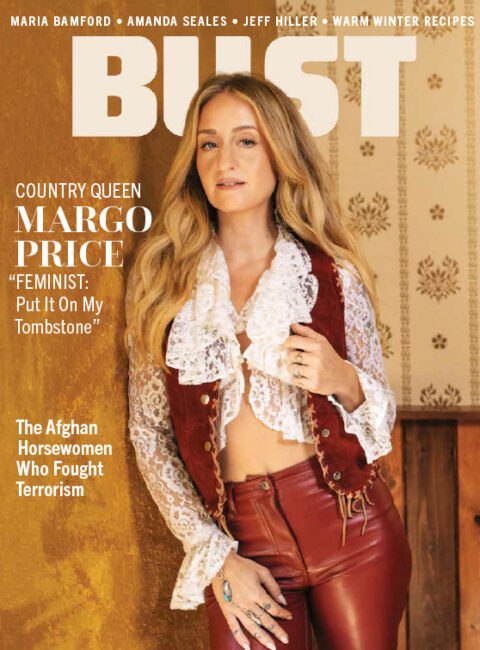The silhouette of women’s gowns changed a great deal over the course of the 19th century. Side-by-side, it’s easy to notice the difference between an early Regency gown with an empire waist, and a late-Victorian dress with a bustle. But it is harder to pinpoint the differences in style during the transitional decades, the 1820s, 1830s, and 1870s, for instance. With that in mind, I present you with a decade-by-decade visual guide to silk gowns as they evolved during the 19th century.
*All of the images of gowns are courtesy of The Costume Institute at The Metropolitan Museum of Art. If you click an image here, it will take you straight to their website where, in many cases, you can see multiple views of the gown as well as close-up images of stitching and trim.
1800
To usher in the century, here is an elegant striped silk British dress from 1800.
 1800 British Silk Dress. (Image via Met Museum)
1800 British Silk Dress. (Image via Met Museum)
 1800 British Silk Dress. (Image via Met Museum)
1800 British Silk Dress. (Image via Met Museum)
1810
A festive 1811 British ballgown of gold and lace fabric trimmed with pearls. For reference, this is the decade of most of our Jane Austen and Georgette Heyer heroines. Pride and Prejudice was published in 1813 and Heyer’s Regency Buckwas set in 1811. Which heroine do you suppose would look best wearing this gold confection?
 1811 British Ball Gown. (Image via Met Museum)
1811 British Ball Gown. (Image via Met Museum)
 1811 British Ball Gown. (Image via Met Museum)
1811 British Ball Gown. (Image via Met Museum)
1820
A lovely printed silk British dress from 1820. Note the addition of flounces, belt, and trimmings!
 1820 British Silk Dress. (Image via Met Museum)
1820 British Silk Dress. (Image via Met Museum)
 1820 British Silk Dress. (Image via Met Museum)
1820 British Silk Dress. (Image via Met Museum)
1830
A beautiful floral and striped silk British gown from 1836. As a point of reference, this is the decade in which George Eliot set her novel, Middlemarch. Perhaps the below gown is one that Rosamond Vincy might have worn? Failing that, it could just as easily have been in the wardrobe of one of the characters in Elizabeth Gaskell’s Wives and Daughters (which was set in the same decade).
 1836 British Silk Gown. (Image via Met Museum)
1836 British Silk Gown. (Image via Met Museum)
 1836 British Silk Gown. (Image via Met Museum)
1836 British Silk Gown. (Image via Met Museum)
1840
An 1842 British gown of floral-patterned silk. Gowns of the 1840s were often severe, but the pattern of this dress makes it appear much softer and more feminine than others of the decade.
 1842 British Silk Gown. (Image via Met Museum)
1842 British Silk Gown. (Image via Met Museum)
 1842 British Silk Gown. (Image via Met Museum)
1842 British Silk Gown. (Image via Met Museum)
1850
A very pretty 1850 British gown made of silk and flax. The 1850s were the decade in which Elizabeth Gaskell set her novel North and South. I wonder if Margaret Hale could have bought a gown like the one below in Milton?
 1850 British Silk and Flax Gown (Image via Met Museum)
1850 British Silk and Flax Gown (Image via Met Museum)
 1850 British Silk and Flax Gown (Image via Met Museum)
1850 British Silk and Flax Gown (Image via Met Museum)
1860
A stunning Emile Pingat French silk ballgown, circa 1864. Notice the increase in the width of the skirts. During the 1860s, the popularity of the crinoline was at its peak!
 1864 Emile Pingat French Silk Ballgown. (Image via Met Museum)
1864 Emile Pingat French Silk Ballgown. (Image via Met Museum)
 1864 Emile Pingat French Silk Ballgown. (Image via Met Museum)
1864 Emile Pingat French Silk Ballgown. (Image via Met Museum)
1870
A gorgeous green silk British dress from 1870. By the late 1860s and early 1870s, the crinoline had fallen out of favor. The size of skirts reduced to more manageable proportions, with the bulk of the fabric now drawn to the back of the dress in elegant — and sometimes elaborate — draping. This is generally known as the “first bustle era.”
 1870 British Silk Dress. (Image via Met Museum)
1870 British Silk Dress. (Image via Met Museum)
 1870 British Silk Dress. (Image via Met Museum)
1870 British Silk Dress. (Image via Met Museum)
1880
A brown silk and velvet American gown from 1884. This is what is known as the “second bustle era.” Gowns were made of heavier fabric and trimmings, while the bustle itself grew to enormous proportions. It was at its biggest by the middle of the decade, but reduced to a more modest size by 1890.
 1884 American Silk Gown. (Image via Met Museum)
1884 American Silk Gown. (Image via Met Museum)
 1884 American Silk Gown. (Image via Met Museum)
1884 American Silk Gown. (Image via Met Museum)
1890
For our final gown of the 19th century, here’s an 1893 silk and wool evening dress trimmed with rhinestones.
 1893 Evening Dress. (Met Museum)
1893 Evening Dress. (Met Museum)
Of course, there are infinite variations on each of these styles. Fabrics varied. As did prints, patterns, and colors. And as for trimmings—some gowns were edged with pearls or jewels. Some with fragile, expensive lace. And some with fringe or even fur. The only limit for a lady was her budget and her own good taste (or the good taste of her modiste!).
This post originally appeared on MimiMatthews.com and is reprinted here with permission.
top photo vi Sense and Sensibility
More from BUST
Victorian Governesses Were In Danger From Their Employers
In The Victorian Era, Women Sent Secret Love Messages With Their Fans
The Strange Role Cats Played In Victorian Fashion

